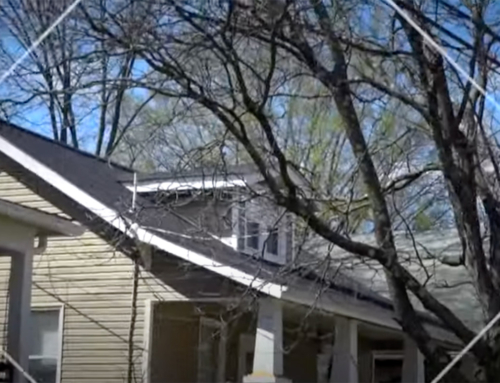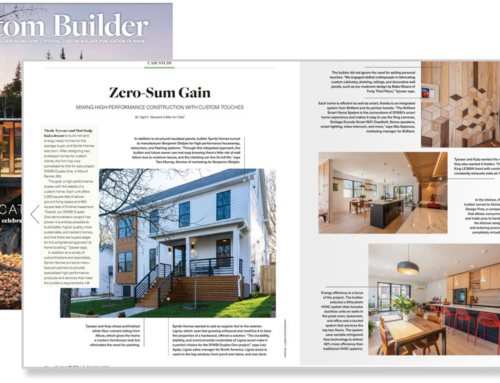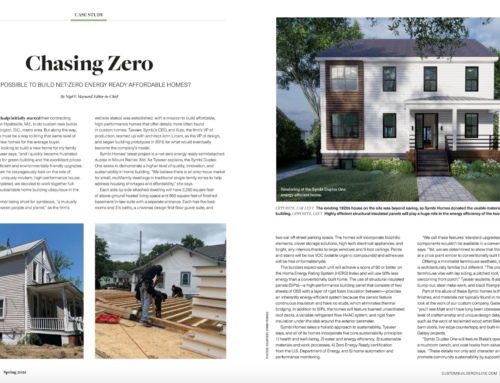At SYMBI, we embrace technology and innovation in pursuit of our enlightened approach to home building that nurtures both people and planet. Part of that strategy is moving away from traditional methods of wood-framed construction that offer minimal protection from the elements, excessive material waste, and a rather short building lifespan. By contrast, the exterior shell of our high performance SYMBI HOMES are built from structurally insulated panels (SIPs). Lately, the buzz about SIPs construction has been growing. So what are SIPs? And why all the hype?

SIPs stacked ready for installation.
SIPs are factory-built wall sections consisting primarily of two sheets of OSB that sandwich an inner core of ESP Styrofoam. The panels are engineered precisely for the architecture of the home, built exactly to size, shipped flat, and then assembled like a giant Lego puzzle on site. SIPs are incredibly energy efficient, environmentally-friendly, durable, and rather easy to install. SIPs reduce on-site construction time and material waste.
Check out one of our basic videos on SIPs construction and the SYMBI Duplex One SIPs install video above.
A shockingly high number of builders are still using the age-old traditional stick built construction. More than 90% of homes built in the US are traditional 2×4 or 2×6 lumber. Yet, SIPs have been around for 30+ years, and are gaining attention. The building industry simply can’t keep up with the demand for housing in the US. This has raised the alarm to find more efficient construction techniques. In addition, during the pandemic, manufactured SIPs have been more cost-stable than lumber and therefore the industry is eyeing this type of innovation to bring costs down.
Still, the largest obstacle to SIPs adoption remains the learning curve. While I profess that SIPs are relatively “easy to install”, the technique requires specialized knowledge, hands-on training and attention to detail. Leaks within a SIPs wall can go undetected for long periods of time, and therefore waterproofing is even more critical than conventional methods. Furthermore, SIPs require lots of advance planning—once panels are cut, builders have little opportunity to change things like window and door size. Matt Risinger has an awesome video (nearly a million views!) on the pros and cons of SIPS and other wall systems.
For more information about SIPs visit the SIPs Association website.

SIPs framing in progress at SYMBI Duplex One.





